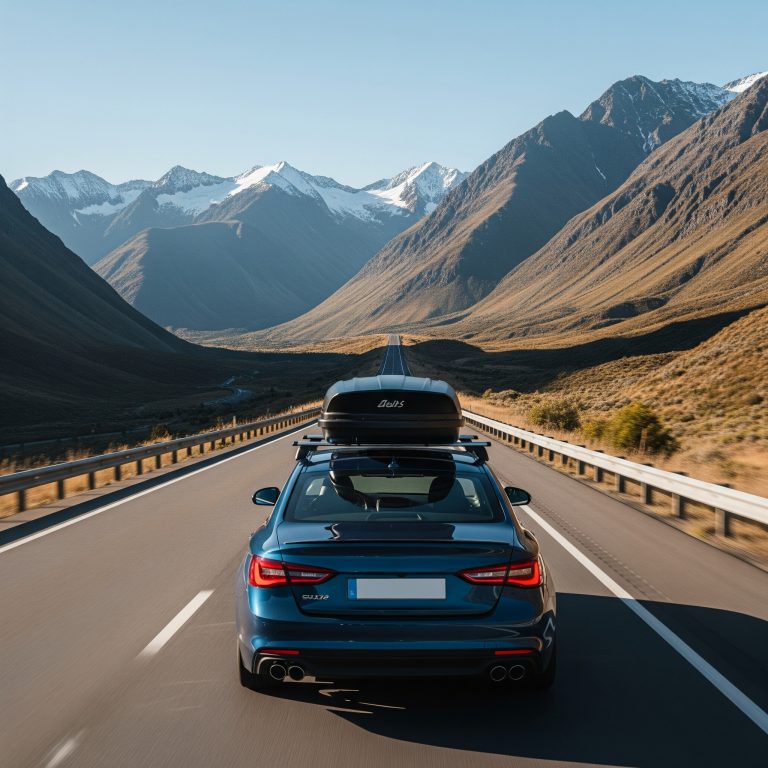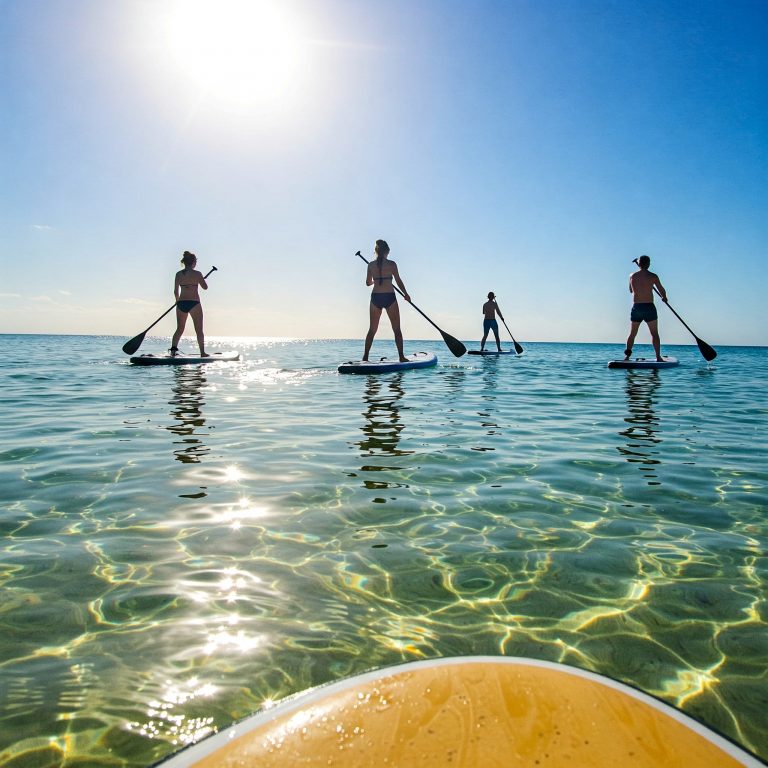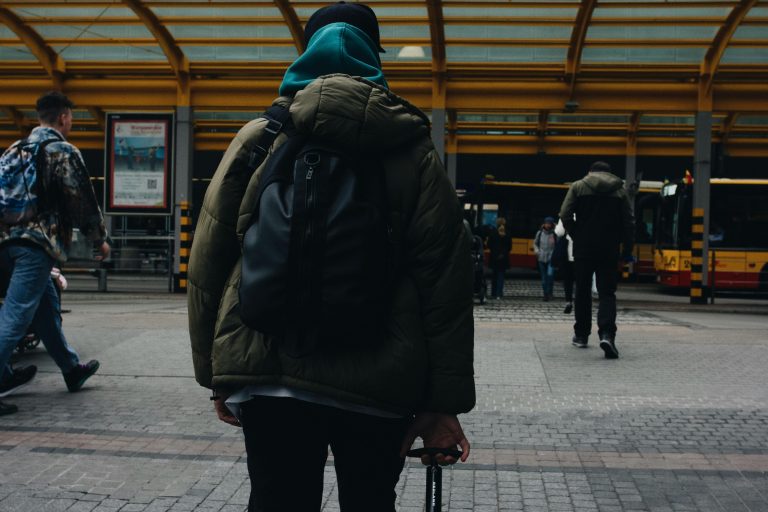Slow travel invites us to relish the journey instead of racing towards our destination, encouraging a deeper connection with local cultures and environments. Originating in Italy during the 1980s, it was a response to fast-paced tourism that often overlooks genuine experiences.
By favouring trains, buses, travel in your own or hired vehicle, biking and even walking, slow travel not only reduces our carbon footprint but also supports small businesses within communities. It encourages personal growth through meaningful interactions while being kinder on the wallet. Embracing a slower pace allows for rich cultural exchanges and unexpected discoveries that truly boost our adventures beyond mere sightseeing.
1. Definition of Slow Travel
Slow travel is about taking your time. It encourages you to enjoy the journey rather than just focusing on reaching your destination. This means you can fully immerse yourself in the local culture, environment and community. By slowing down, you create opportunities for meaningful interactions and experiences that are often overlooked in a fast-paced travel environment. It’s a chance to connect with the places you visit on a deeper level, making your travels not just about seeing new sights, but about understanding and appreciating the world around you.
2. History of Slow Travel
The roots of slow travel can be traced back to Italy in the 1980s, where it began as a reaction to the fast-paced lifestyles that prioritised quick consumption over meaningful experiences. The Slow Food movement, which advocated for local cuisine and sustainable practises, sparked a broader ethos that encouraged travellers to savour every moment. Instead of rushing from one tourist hotspot to another, slow travel invites individuals to immerse themselves in the culture, traditions and natural beauty of the destinations they visit.
Over the years, this concept has matured and diversified, embracing various forms of travel that align with sustainability and deeper engagement. Today, slow travel is not just about enjoying the journey; it’s a commitment to promoting connections with local communities and preserving the environment.
3. Major Benefits of Slow Travel
Slow travel offers a variety of benefits that help both the travel experience and the impact on the environment. One of the foremost advantages is sustainability. By opting for trains, buses, biking and walking, travellers significantly reduce their carbon footprint. This method of travel not only lessens reliance on fossil fuels but also supports local economies. When you choose to shop at local markets or dine at family-owned restaurants, your spending directly benefits the community, encouraging economic growth and cultural preservation.
Another key benefit is the opportunity to forge deeper connections. Slow travel encourages meaningful interactions with locals, allowing for genuine cultural exchanges. For instance, participating in community events or traditional festivals can provide a better understanding of local customs and practises that fast-paced tourism often overlooks. These experiences enrich your understanding of the destination, creating lasting memories and friendships.
Personal growth is another significant aspect of slow travel. Taking time to appreciate your surroundings leads to moments of self-reflexion and mindfulness. When journeys don’t go as planned, for example if you miss a bus or get very lost, travellers often develop problem-solving skills and adaptability. These unexpected moments can become the most memorable parts of the trip.
Finally, slow travel is often more cost-effective. Opting for slower modes of transport usually comes with a lower price tag compared to flying long distances. Coupled with budget-friendly accommodation options like hostels or homestays, it allows travellers to experience more without breaking the bank. This thoughtful approach to travel not only benefits the individual but also promotes a more sustainable and enriching way to explore the world.
|
Benefit |
Description |
|---|---|
|
Sustainability |
Reduces carbon footprint by favouring eco-friendly transport modes and supports local economies. |
|
Deeper Connections |
Facilitates genuine interactions with locals for richer cultural exchanges. |
|
Personal Growth |
Encourages self-reflection and adaptability through immersive experiences. |
|
Cost-Effective |
Often less expensive than fast travel options and promotes budget-friendly accommodations. |
4. Sustainable Travel Practices
Sustainable travel practises are at the heart of slow travel, focusing on eco-friendly methods that lessen our impact on the planet. Opting for train travel is one of the best choices, as it emits significantly less carbon dioxide compared to flying. For instance, a train journey from London to Edinburgh is not only picturesque but also a fraction of the carbon footprint of a flight. Moreover, bike travel allows for a more intimate connection with the surroundings.
Renting a bicycle in Amsterdam, for example, can lead you through charming streets and hidden parks that you might miss in a car. Walking, the simplest yet most effective form of travel, offers the chance to fully absorb the sights and sounds of a place. Participating in walking tours can also deepen your understanding of local history and culture. All these practises not only promote sustainability but also enrich your travel experience, enabling you to engage more meaningfully with the communities you visit.
5. Traveling by Train
Traveling by train is one of the most delightful ways to embrace slow travel. Trains offer a unique blend of comfort and scenery, allowing passengers to witness the changing landscapes through large windows. Unlike the hustle of airports, train stations often have a more relaxed atmosphere, giving you time to soak in your surroundings before departure. For instance, in Europe, you can easily hop onto a high-speed train or enjoy a scenic route through the countryside, like the breathtaking Glacier Express in Switzerland.
Moreover, trains are remarkably eco-friendly, producing significantly lower carbon emissions compared to cars and planes. They also provide opportunities to meet fellow travellers, share stories and perhaps even forge friendships that last beyond the journey. In many countries, rail passes are available, making it cost-effective to explore multiple destinations without the burden of constant packing and unpacking.
Train travel also encourages a slower pace, allowing you to savour each moment. You can enjoy a leisurely meal in the dining car or simply relax with a good book. The rhythmic sound of the train gliding along the tracks can be soothing, making it a perfect backdrop for reflexion or simply taking in the beauty of the journey. By choosing to travel by train, you’re not just getting from point A to B; you’re engaging with the journey itself, making every mile an experience to remember.
If you’re curious about taking the scenic route through Europe, Eurail and Interrail passes are tailor-made for this kind of journey.
6. Biking for Exploration
Biking is an excellent way to immerse yourself in a destination while promoting a sustainable lifestyle. It allows for a unique perspective, often revealing hidden corners of a city or countryside that you might miss when travelling by car or bus. For instance, in cities like Amsterdam or Copenhagen, cycling is not just a mode of transport; it’s part of the culture. You can rent a bike easily and explore the winding canals, local parks and quaint neighbourhoods at your own pace.
Moreover, biking promotes health and fitness, making it a win-win for both the environment and your well-being. Many regions offer dedicated cycling paths, making it safer and more enjoyable to navigate. Joining guided biking tours can also improve your experience, as local guides often share knowledge and stories that you won’t find in guidebooks. Whether it’s a leisurely ride through the vineyards of Tuscany or a challenging mountain trail in the Scottish Highlands, biking connects you with the landscape and its people.
To make the most of your biking experience, consider planning routes that include stops at local markets or community events. This not only supports local businesses but also enriches your journey with authentic experiences. With the wind in your hair and the freedom to explore, biking embodies the essence of slow travel, allowing you to savour each moment as you traverse new terrains.
7. Walking as a Travel Method
Walking stands out as the most sustainable travel method, offering an intimate way to explore new destinations. It allows you to connect deeply with your surroundings, whether you’re wandering through the charming streets of a historic town or hiking along scenic trails. Consider joining a local walking tour; these often provide a better understanding of the area’s culture and history that you might miss when travelling by other means.
For example, walking through the picturesque villages of the Cotswolds in England can reveal stunning architecture and hidden gems, all while immersing yourself in the local way of life. Remember to wear comfortable shoes, carry plenty of water and take your time. The slower pace not only improves your experience but also contributes to your physical well-being, making walking a truly enriching way to travel.
8. Tips for Effective Slow Travel
To make the most of your slow travel experience, focus on planning an itinerary that allows for longer stays in fewer locations. This approach not only reduces travel time but also enriches your connection with the local culture. Embracing public transport can offer a more genuine glimpse into the daily lives of the residents, from bustling buses to quaint trains. Engaging with locals is crucial; attending community events or seeking out volunteer opportunities can lead to meaningful interactions and deeper understanding of the area. Maintain an open mind and be flexible with your plans, as spontaneity often leads to the most memorable experiences. For instance, you might stumble upon a charming market or an unexpected festival that enriches your journey far beyond the guidebook recommendations.
-
Plan your itinerary with ample time at each destination to soak in the local culture.
-
Embrace flexibility; be open to spontaneous adventures and changes in plans.
-
Pack light to make moving between locations easier and to engage more with your surroundings.
-
Use public transport or bike rentals to explore, rather than relying on taxis or cars.
-
Connect with locals for insights and recommendations that you won’t find in guidebooks.
-
Prioritise slow, mindful travel over ticking off numerous sights in a rush.
-
Document your experiences through journaling or photography to preserve memories.
9. Final Thoughts on Slow Travel
Slow travel invites us to rethink our approach to exploration. It’s about immersing ourselves in the local fabric of life, where every train ride, bike path, or walk down a village lane reveals stories waiting to be told. Imagine sipping coffee at a local café, sharing laughter with a resident, or discovering a hidden market brimming with local produce. This way of travelling nurtures our appreciation for the environment and the cultures we engage with.
The slower pace offers us the opportunity to reflect on our experiences, promoting connections that resonate long after the journey ends. Instead of ticking off boxes, we begin to cherish moments, understanding that the journey itself can be as enriching as the destination. Choosing slow travel is a conscious decision to live with intention, to explore with curiosity and to leave a positive mark on the places we visit.
For those looking to take this mindset even further, health and wellness retreats can be a beautiful extension of slow travel, offering space to rest, reset and reconnect with yourself in meaningful ways.
Frequently Asked Questions
1. What is slow travel and why is it considered better for the environment?
Slow travel means exploring places at a relaxed pace, often using trains, buses, bikes, or even walking. It’s considered better for the environment because it reduces carbon emissions compared to flying or driving long distances.
2. How can I plan a slow travel itinerary that focuses on local experiences?
To plan a slow travel itinerary, start by choosing a region or city you want to explore. Research local attractions, markets and activities that allow you to immerse yourself in the culture. Consider spending more time in each place to really savour the experiences.
3. Are there specific benefits to travelling by train compared to other modes of slow travel?
Yes, travelling by train can be more comfortable and scenic. Trains often have more space to move around and can take you through beautiful landscapes that you might miss while driving. They also reduce your carbon footprint, making it a more sustainable choice.
4. What are some tips for staying safe while travelling slowly on foot or by bike?
To stay safe while walking or biking, plan your route in advance and stick to well-marked paths or cycle lanes. Always wear a helmet, stay aware of traffic and keep your belongings secure. It’s also a good idea to travel with a buddy when exploring new areas.
5. How does slow travel improve the experience of meeting local people?
Slow travel gives you more time to engage with locals, whether through conversations in markets, joining community events, or seeking recommendations for hidden gems. This deeper connection helps you understand the culture and form meaningful relationships with the people you meet.
Slow travel is all about enjoying the journey and connecting with local cultures rather than rushing to reach a destination. Emerging from the Slow Food movement in Italy during the 1980s, it promotes sustainability, personal growth and deeper connections with places and people. Modes of transport like trains, bikes, buses and walking are favoured for their lower environmental impact.
Practical tips include planning longer stays, using public transport and engaging with locals. Ultimately, embracing slow travel enhances your experience while benefiting the communities you visit.




